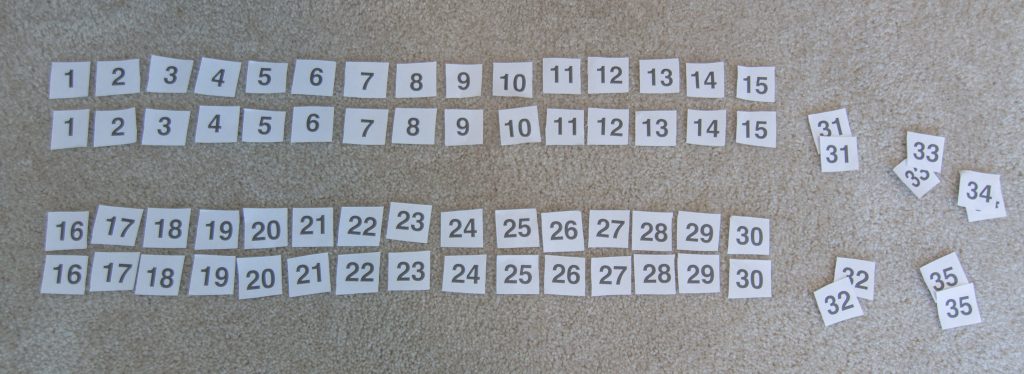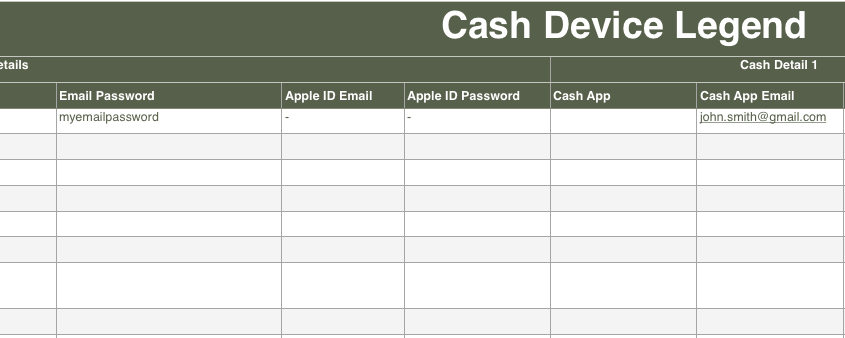Organization of your money-making phones and their information is important. You want to be efficient in identifying devices and their credentials. I will show you how I organize all of them.
Naming Devices on a Physical Level
This is the most important aspect of my naming system for devices. It allows me to:
- Give each device a unique ID.
- Record all information about it using its ID.
I just made a document with bold letters numbered 1 – 30 and printed it twice. One number would be attached to the phone and the other one would be attached to the table. These are slots so to speak. Each phone belongs in its respective slot. The picture should demonstrate this.

You can download a document that has these numbers in real sizes of about 1 in by 1 in (2.5 cm x 2.5 cm). You can print this out and use it for your devices.
Now that your devices are tagged, you can use this spreadsheet to correspond their physical ID with all information on them such as email accounts, Apple IDs, and cash app credentials.

Naming Devices on a Software Level
This isn’t vital but it furthers my organization. It allows me to:
- Correspond the device’s physical ID internally.
- Have VNC Viewer register with the device with this custom name.
This is done different on Android and iOS, but the goal is to make the physical ID you gave the device (in my case a number) the same as the device name internally. This way VNC Viewer will recognize it with our name when we remote access it. I also assign the IP address according to the device ID.
On iOS, it can be done in Settings > General > About. Just change the device name from here.
On Android, it is more complicated. Here is a tutorial.
Also, if you want to be able to remote access your devices efficiently, you can save the VNC files with the internal IP of the device and password with the device’s ID.
You can now continue on to managing Google accounts and rooting Android devices.
Alternatively, you can continue on to optimizing your internet!
